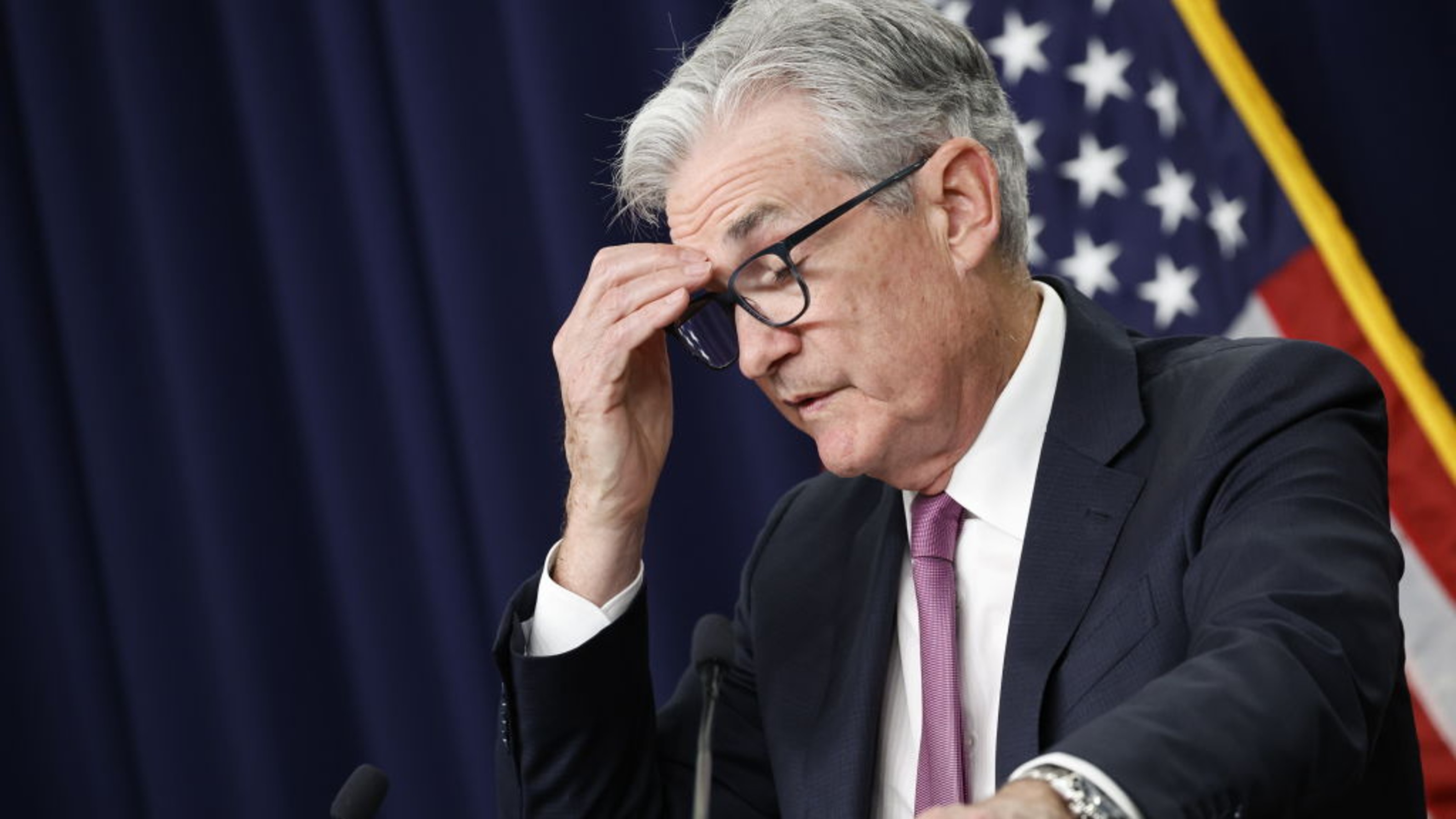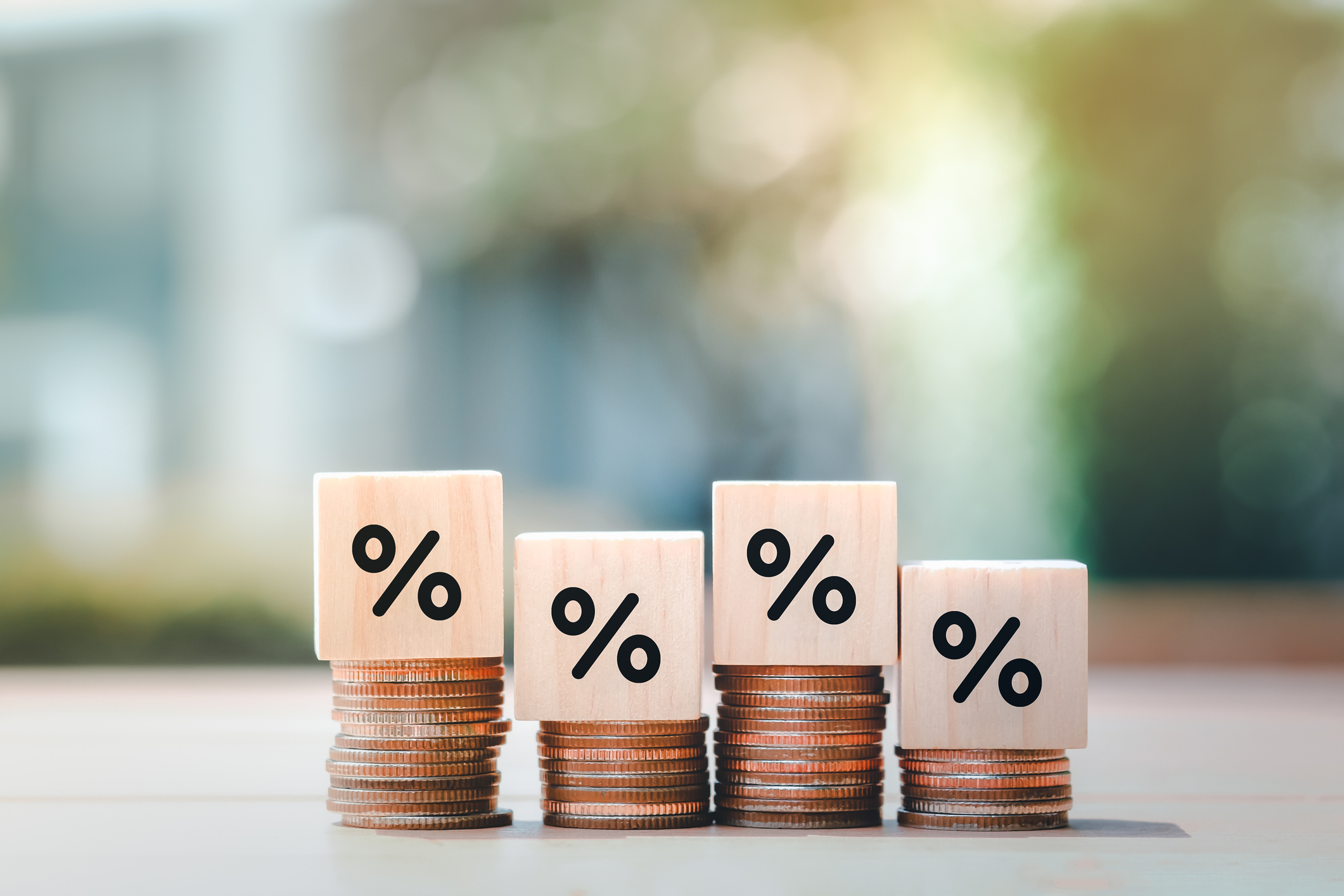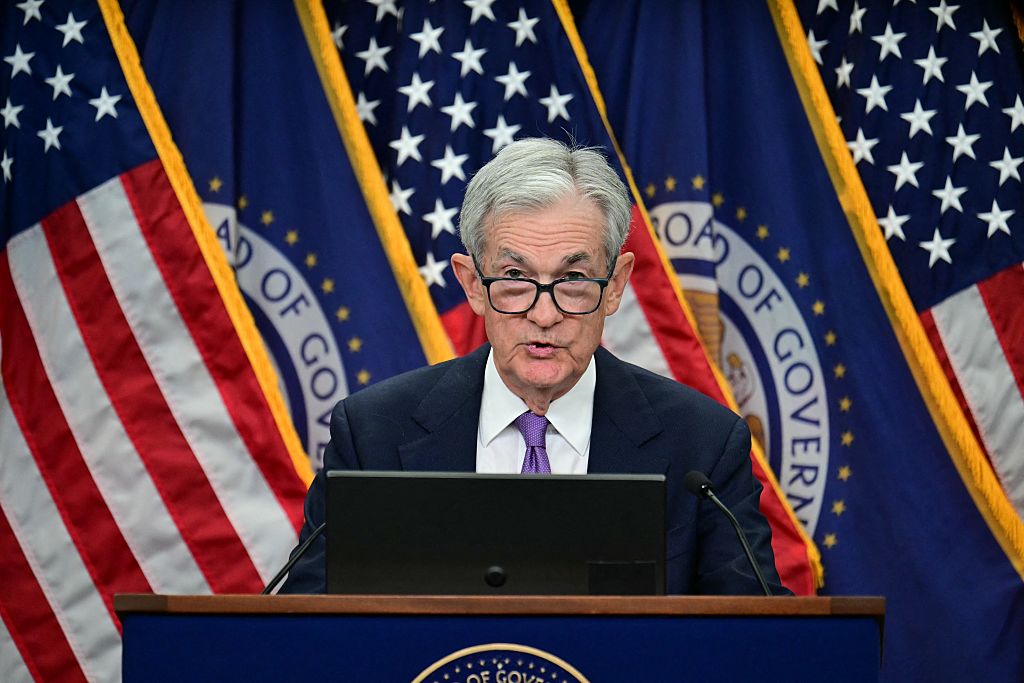Fed Chief Jerome Powell Signals Slowdown in Rate Hikes: What the Experts Are Saying
Stocks rallied after Fed Chair Jerome Powell indicated that December's rate hike would be smaller.


Federal Reserve Chair Jerome Powell signaled that the central bank will slow its pace of rate hikes next month, but stressed that borrowing costs will remain high for the foreseeable future in a bid to halt the worst inflation in four decades.
In a speech delivered at the Brookings Institution in Washington, D.C., on Wednesday, Jerome Powell acknowledged that monetary policy affects the economy and inflation with "uncertain lags." As such, the full effects of the Fed's rapid series of rate hikes have yet to be felt.
"Thus, it makes sense to moderate the pace of our rate increases as we approach the level of restraint that will be sufficient to bring inflation down," said Jerome Powell. "The time for moderating the pace of rate increases may come as soon as the December meeting."
From just $107.88 $24.99 for Kiplinger Personal Finance
Become a smarter, better informed investor. Subscribe from just $107.88 $24.99, plus get up to 4 Special Issues

Sign up for Kiplinger’s Free Newsletters
Profit and prosper with the best of expert advice on investing, taxes, retirement, personal finance and more - straight to your e-mail.
Profit and prosper with the best of expert advice - straight to your e-mail.
Market participants expect the central bank to enact a rate hike of 50 basis points, or 0.5%, when it concludes its two-day meeting on Dec. 14.
Stocks rose sharply on the news, with the S&P 500 vaulting into positive territory following Jerome Powell's remarks. The blue-chip Dow Jones Industrial Average and tech-heavy Nasdaq Composite likewise rallied on the Fed chair's more dovish stance.
To get a sense of what market pros are making of Jerome Powell's speech on rate hikes, below please find a selection of commentary from economists, strategists and other experts, sometimes edited for brevity.
- "Despite one soft CPI print, the Chair hasn't changed his tune since the post-meeting presser of earlier this month. A tight labor market that has shown only 'tentative' signs of moderation is clearly in his crosshairs. Until job growth slows more substantially and the unemployment rate kicks higher, don't expect him to ease up on the hawkish rhetoric. As largely expected, Chair Jeome Powell ratified market expectations of a likely 50 basis point rate hike on December 14, while underscoring that rates are likely to go higher than the Fed previously thought and remain elevated for a while. Powell said the time to moderate the pace of rate hikes could come as soon as the next meeting given substantial progress in taking policy toward a 'sufficiently restrictive' stance and in recognition of the lagged effects of past policy moves. However, he also stuck to his recent script that the terminal policy rate is likely to go 'somewhat higher' than the Federal Open Market Committee (FOMC) thought in September (4.50% to 4.75% in late 2023) and may need to be held at a restrictive level 'for some time,' as the Fed has a long way to go to restore price stability." – Sal Guatieri, senior economist at BMO Capital Markets
- "Lower growth is needed to quell inflation and to restore the balance between supply and demand. Without a doubt, the pandemic pushed supply and demand out of balance. As trade and supply chains improve, supply should have a better chance of meeting aggregate demand. The Fed will likely downshift the pace of rate hikes at the upcoming December meeting. Bottom Line: Although much of Chair Jerome Powell’s comments were benign and predictable, investors could be spooked with the Chair's admission that 'the path ahead for inflation remains highly uncertain.' Overall, this speech will likely be bullish for the markets in the near term." – Jeffrey Roach, chief economist at LPL Financial
- "It's a relief to hear Jay Powell go into at least some detail regarding the key elements of inflation including the misleading 'owners equivalent rents' outsized impact on core CPI and offering a more realistic picture of housing inflation. While still mostly ignoring the elephant in the room regarding the role of fiscal stimulus in keeping work force participation too low to relieve wage inflation pressures, Powell did point out that Congress could pursue pro-labor policies to improve work force participation. Greenspan was effective at educating people on nuances in economic measurements and Powell certainly had a Greenspan-like moment when we went into some depth to explain how the six to twelve month lag in lease renewals falsely gives the impression that housing costs are still rising rapidly. He further explained how by looking at new lease rates, it is apparent the housing inflation is subsiding rapidly. This greatly reduces the pressure on the Fed to continue to raise rates aggressively and finally is more consistent with the obvious reality all the rest of us are experiencing in real time. Stocks should push higher and the yield curve inversion should now lessen." – Bryce Doty, senior vice president and senior portfolio manager at Sit Investment Associates
- "There has been very little discussion from FOMC voting members about the Terminal Rate, but there have been a couple of comments lately about slowing the pace of increases. Markets have jumped at the suggestion that the December meeting could bring only a 0.50% hike — a clear difference from the 0.75% trend. The problem is that markets have taken that 0.25% difference and applied it to the Terminal Rate. So here we are again talking about the difference in language. Less Hawkish language does not imply a change in policy or a 'pivot.' Further, there is not enough empirical data to make us believe that the Fed Funds Rate will be less than 5% right now. Keep in mind, CPI is 7.7% and PCE is 5.15% — both are a LONG way from the 2% target and data shows that we will not be under 3% CPI until late 2024-mid 2025." – Brian Mulberry, client portfolio manager at Zacks Investment Management
- "Although Jerome Powell echoed many of the comments he made at the November 2 press conference regarding smaller rate hikes as the Fed navigates its way toward price stability, the 10-Year Treasury edged lower, while the policy sensitive 2-Year Treasury yield similarly inched slightly lower. The equity markets, across the board, climbed higher as Powell assured markets that although the Fed is dealing with many uncertainties, the Fed will continue to raise rates but with a step down approach, with smaller rate hikes so they can monitor the lagged effect of the cumulative hikes working their way through the broader economy." – Quincy Krosby, chief global strategist at LPL Financial
- "Powell confirmed that the Fed is about to pivot and that got investors excited today. Despite his best Fed doublespeak, Wall Street got excited when Chairman Powell talked about inflation declining. Fed Chairman Jerome Powell's speech at the Brookings Institution on Wednesday started off hawkish when he said. "I will simply say that we have more ground to cover." However, Powell also said that inflation forecasts from the Fed pointed to a 'significant decline over the next year.'" – Louis Navellier, chairman and founder of Navellier & Associates
- "Powell says 'moderate' but investors hear 'pivot.'" – David Rosenberg, founder and president of Rosenberg Research
Profit and prosper with the best of Kiplinger's advice on investing, taxes, retirement, personal finance and much more. Delivered daily. Enter your email in the box and click Sign Me Up.

Dan Burrows is Kiplinger's senior investing writer, having joined the publication full time in 2016.
A long-time financial journalist, Dan is a veteran of MarketWatch, CBS MoneyWatch, SmartMoney, InvestorPlace, DailyFinance and other tier 1 national publications. He has written for The Wall Street Journal, Bloomberg and Consumer Reports and his stories have appeared in the New York Daily News, the San Jose Mercury News and Investor's Business Daily, among many other outlets. As a senior writer at AOL's DailyFinance, Dan reported market news from the floor of the New York Stock Exchange.
Once upon a time – before his days as a financial reporter and assistant financial editor at legendary fashion trade paper Women's Wear Daily – Dan worked for Spy magazine, scribbled away at Time Inc. and contributed to Maxim magazine back when lad mags were a thing. He's also written for Esquire magazine's Dubious Achievements Awards.
In his current role at Kiplinger, Dan writes about markets and macroeconomics.
Dan holds a bachelor's degree from Oberlin College and a master's degree from Columbia University.
Disclosure: Dan does not trade individual stocks or securities. He is eternally long the U.S equity market, primarily through tax-advantaged accounts.
-
 5 Investment Opportunities in 2026
5 Investment Opportunities in 2026As investors game-plan for the year ahead, these five areas of the equity markets deserve their attention.
-
 How Verizon’s Free Phone Deals Work
How Verizon’s Free Phone Deals WorkWhat shoppers need to know about eligibility, bill credits and plan costs.
-
 Does Your Car Insurer Need to Know All Your Kids? Michigan Cases Raise Question
Does Your Car Insurer Need to Know All Your Kids? Michigan Cases Raise QuestionWho you list on your policy matters more than most drivers realize, especially when it comes to who lives in your home.
-
 The December CPI Report Is Out. Here's What It Means for the Fed's Next Move
The December CPI Report Is Out. Here's What It Means for the Fed's Next MoveThe December CPI report came in lighter than expected, but housing costs remain an overhang.
-
 How Worried Should Investors Be About a Jerome Powell Investigation?
How Worried Should Investors Be About a Jerome Powell Investigation?The Justice Department served subpoenas on the Fed about a project to remodel the central bank's historic buildings.
-
 The December Jobs Report Is Out. Here's What It Means for the Next Fed Meeting
The December Jobs Report Is Out. Here's What It Means for the Next Fed MeetingThe December jobs report signaled a sluggish labor market, but it's not weak enough for the Fed to cut rates later this month.
-
 The November CPI Report Is Out. Here's What It Means for Rising Prices
The November CPI Report Is Out. Here's What It Means for Rising PricesThe November CPI report came in lighter than expected, but the delayed data give an incomplete picture of inflation, say economists.
-
 The Delayed November Jobs Report Is Out. Here's What It Means for the Fed and Rate Cuts
The Delayed November Jobs Report Is Out. Here's What It Means for the Fed and Rate CutsThe November jobs report came in higher than expected, although it still shows plenty of signs of weakness in the labor market.
-
 December Fed Meeting: Updates and Commentary
December Fed Meeting: Updates and CommentaryThe December Fed meeting is one of the last key economic events of 2025, with Wall Street closely watching what Chair Powell & Co. will do about interest rates.
-
 The Delayed September Jobs Report Is Out. Here's What It Means for the Fed
The Delayed September Jobs Report Is Out. Here's What It Means for the FedThe September jobs report came in much higher than expected, lowering expectations for a December rate cut.
-
 October Fed Meeting: Updates and Commentary
October Fed Meeting: Updates and CommentaryThe October Fed meeting is a key economic event, with Wall Street turned into what Fed Chair Powell & Co. did about interest rates.